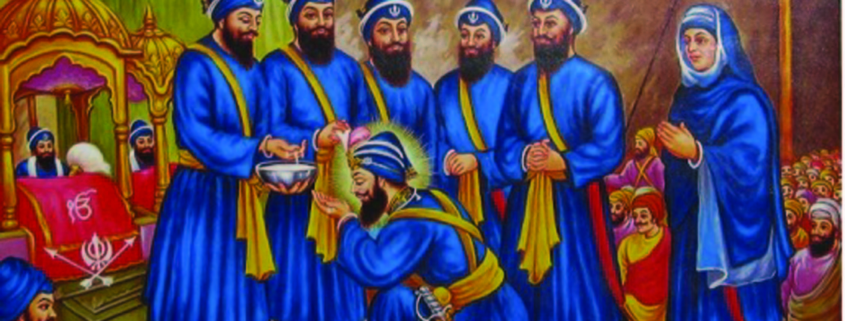Sadh Sangat Jee,
Vaheguru Jee Ka Khalsa.
Vaheguru Jee Kee Fateh.
This year, we will celebrate Vaisakhi with the same faith and fervour as always. But, Vaisakhi this year will not be as usual.
Sikh Council UK recognises the difficulty that the sangat is facing. All Nagar Kirtans, Divaans and Samagams have been postponed until further notice.
Vaisakhi commemorates the most significant transformation of Sikhi since it’s inception – The creation of the Khalsa at Sri Anandpur Sahib, 1699 A.D.
As Sikhs, we believe our tenth Guru, Sri Guru Gobind Singh Jee blessed the world with the pinnacle of human capability in the form of the Khalsa.
We’re sure every Sikh around the world is thinking about ways to celebrate Vaisakhi in the current circumstance. Many are actively engaged in voluntary work around the globe showcasing the teachings of Sikhi in a practical way.
Several creative initiatives have been circulating in the sangat, including raising handcrafted Nishaan Sahibs outside houses or adorning orange Dastaars/Chunnis (head-coverings) during our daily exercise. Many educational organisations are holding virtual divaans (services) throughout the day, and our media outlets will be live streaming special broadcasts from the Takths and Gurdwaras around the world.
We’ve been looking at our rich and vibrant history of the Khalsa to explore the diverse teachings of Vaisakhi:
- Preceding the Vaisakhi of 1721, Bhai Mani Singh Jee, the Head Granthi of Sri Harmandir Sahib, Amritsar, resolved the divide between the Bandai Sikhs and the Tat Khalsa through the Guru’s divine grace and unified the Panth.
- During the Sarbat Khalsa of Vaisakhi 1748, Nawab Kapur Singh Jee appointed Sardar Jassa Singh Alhuwalia as the Jathedar (leader) of the Dal Khalsa. Under his strong leadership, the Khalsa was able to achieve many victories. Through the formation of the Dal Khalsa, the two battalions of the Buddha Dal (elders) and Taruna Dal (youth) were able to utilise and direct the energy of the Panth. This ensured continuity of skills in the Panth.
- In 1763, the Khalsa was celebrating Vaisakhi at Sri Amritsar Sahib after a series of victories including the liberation of Lahore. A Hindu Brahmin came and pleaded to the Khalsa that the Mughal Governor in Kasur had abducted his daughter. Many Sikh leaders rose to the opportunity, but some were apprehensive due to the risks involved in pursuing another military campaign. History records, the Khalsa performed an Ardhaas, and the decision was reached through the Mukhvaak of Sri Guru Granth Sahib. The campaign was victorious. This shows our success is rooted in the sanctuary of Gur-Shabad (Guru’s Scripture).
Currently, while the nation is in lockdown, unity, leadership and continuity are needed more than ever. As Sikhs, our greatest strength lies in the sanctuary of Gur-shabad.
In our past, we have been unable to congregate and celebrate as usual due to oppressive and tyrannous enemies. But, when circumstances became better, we were motivated to come together as a Panth. Humanity is facing an invisible enemy. Together, through the will of Vaheguru, we will emerge from this period valuing things that we may have taken for granted in the past, for example, darshan of Guru-Ghars, Sangat and Amrit.
Sri Guru Gobind Singh Jee created a ‘free nation’ in the form of the Khalsa Panth. Even if a Sikh is confined – he or she should remain free in mind and spirit. We should take inspiration from our Sikh political prisoners around the world who feel the Guru’s presence even in incarceration.
Sikh Council UK has been busily engaged in co-ordinating our emergency aid efforts in the UK through our newly launched support line. As the largest representative platform for Gurdwaras and Sikh organisations in the nation we ask the sangat for their ongoing support and guidance. Please stay updated through our website www.sikhcouncil.co.uk on guidance and protocols for the community during COVID 19.
-END-
Sukhjeevan Singh Kandola
(Spokesperson, Sikh Council UK)
07703325038
info@sikhcouncil.co.uk


